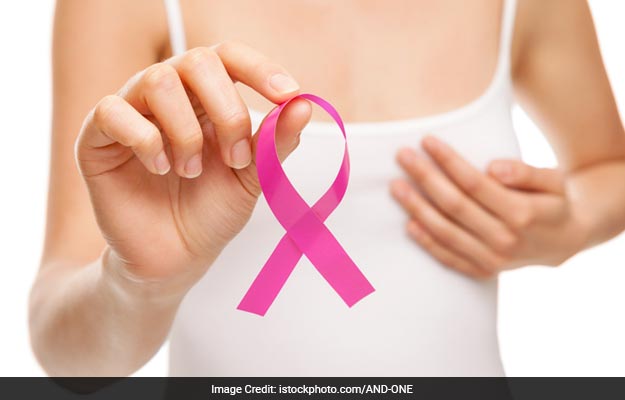Breast cancer forms in tissues of the breast. About 1 in 5 new breast cancer cases are ductal carcinoma in situ. This type of breast cancer begins in the milk ducts, the tubes that carry breast milk from the lobules to the nipple. Nearly all women treated at this early stage can expect to be cancer-free. Invasive ductal carcinoma is the most common type of breast cancer. It may spread to other parts of the body through the blood and lymph systems. Invasive, or infiltrating, ductal carcinoma begins in a milk duct and grows into the fatty tissue of the breast.

Breast Cancer detected in early stages can be treated effectively.
Fact Sheet
- 1 in 8 women will develop invasive breast cancer during her lifetime
- The 5-year survival rate for women with breast cancer has risen from 63% in 1960s to 89% today.
- 2 of 3 invasive breast cancers are found in women ages 55 or older.
- Breast cancer is 100 times more common in women than men.
- Women with an immediate blood relative, such as a mother or sister who has had breast cancer are twice as likely to develop the disease.
- Women with a matured BRCA1 gene have about a 55-65 percent lifetime risk of developing breast cancer. The average woman's lifetime risk is 12%.
- Women with less fatty tissue and more glandular and fibrous tissue may be at higher risk for developing breast cancer.
- Fat tissue may contribute to increases in estrogen levels, and high high levels of estrogen may increase the risk of breast cancer.
- Alcohol use is linked to an increased risk of developing breast cancer. The risk increases with the amount of alcohol consumed.
Common breast cancer signs and symptoms
- Skin changes, such as swelling and redness
- An increase in size or change in shape of the breast(s)
- Changes in the appearance of one or both nipples
- Nipple discharge other than breast milk
- General pain in/on any part of the breast
- Lumps or nodes felt on or inside of the breast
Treatment
Treatment for breast cancer has advanced significantly in the past 30 years. Most women today do not need a mastectomy (removal of breast) and can be treated just as effectively with a lumpectomy (removal of tumor). Modern radiation techniques are better at avoiding damage to healthy tissue and chemotherapy has less serious side effects. Treatment has become more personalized thanks to recent discoveries.
- Surgery: Today surgery has become less aggressive and more patient friendly. The type of surgery will depend on the stage of the disease. In the early stages, breast conservative surgery (BCS) can be done with equally good result as compared to mastectomy. Even patients undergoing mastectomy can have the option of immediate/ delayed breast reconstruction.
- Chemotherapy: Chemotherapy is used to destroy any cancer cell which have escaped in the body. Chemotherapy drugs have become very effective and patient friendly. The drug Herceptine is targeted therapy for the tumor that expresses a special protein called Her-2-neu.
- Hormonal Therapy: Hormone Replacement Therapy block or remove hormones from the body to flow or stop the growth of cancer cell which are dependent on the hormones for their survival.
Disclaimer: This content including advice provides generic information only. It is in no way a substitute for qualified medical opinion. Always consult a specialist or your own doctor for more information. NDTV does not claim responsibility for this information.
DoctorNDTV is the one stop site for all your health needs providing the most credible health information, health news and tips with expert advice on healthy living, diet plans, informative videos etc. You can get the most relevant and accurate info you need about health problems like diabetes, cancer, pregnancy, HIV and AIDS, weight loss and many other lifestyle diseases. We have a panel of over 350 experts who help us develop content by giving their valuable inputs and bringing to us the latest in the world of healthcare.












